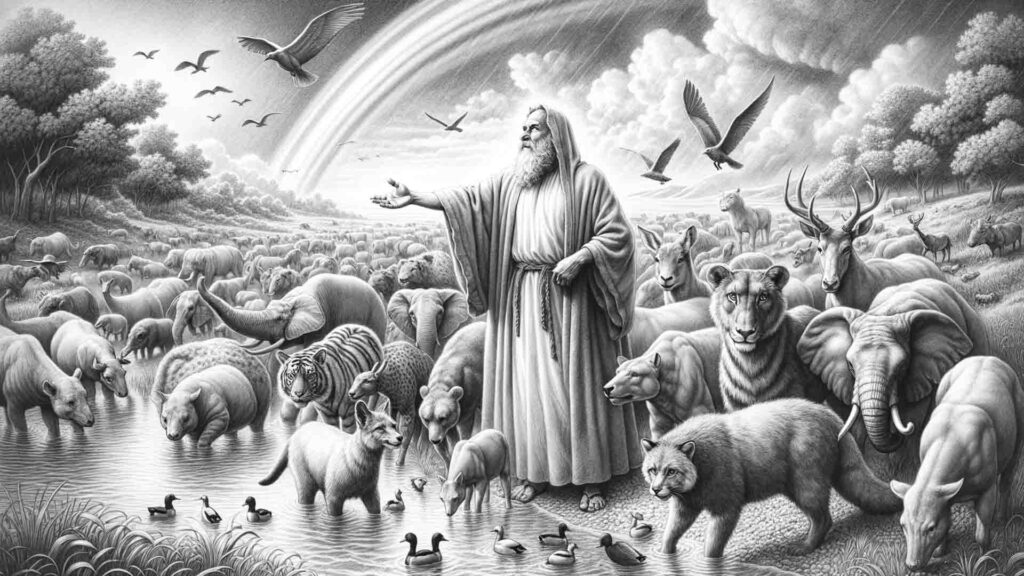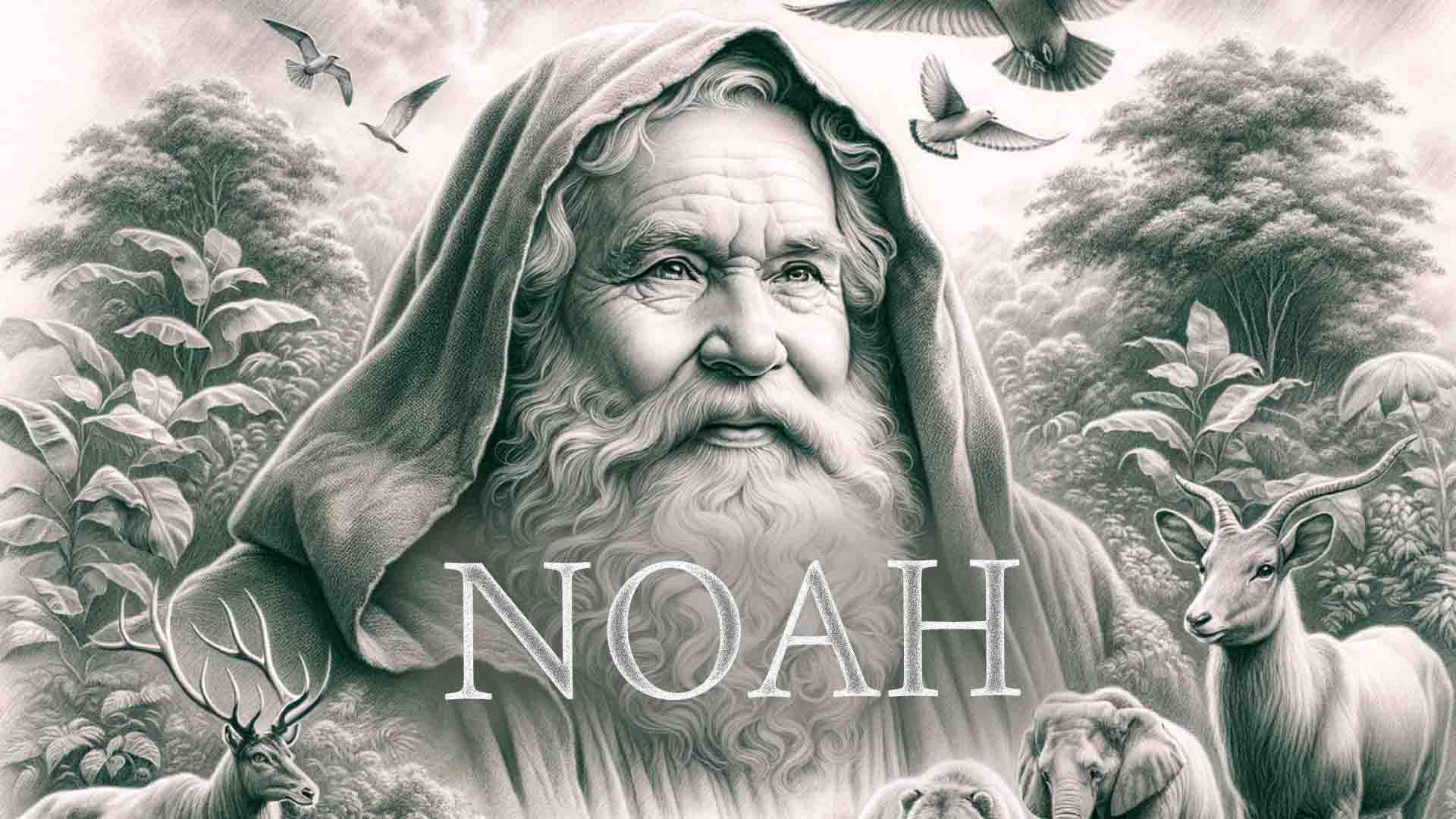Where Noah Appears:
- Book of Genesis Chapters 6-9 – These chapters detail the story of Noah, from the reasons leading up to the great flood, through the construction of the ark, the flood itself, and the aftermath of the flood, including God’s covenant with Noah.
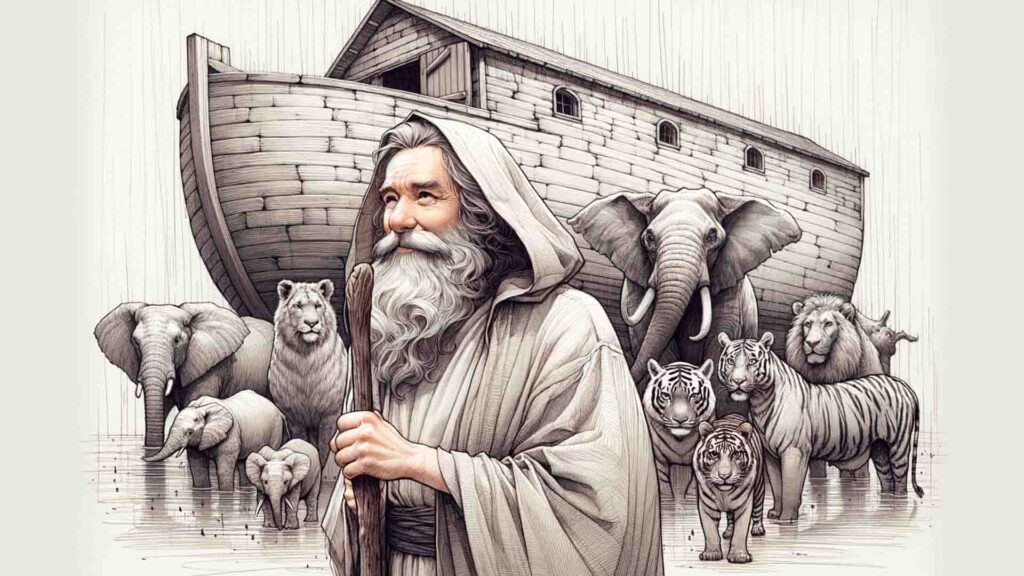
Genealogical tree from Adam to Noah
Adam -> Seth (Genesis 5:3) -> Enosh (Genesis 5:6) -> Kenan (Genesis 5:9)-> Mahalalel (Genesis 5:12) -> Jared (Genesis 5:15) -> Enoch (Genesis 5:18) -> Methuselah (Genesis 5:21) -> Lamech (Genesis 5:25) -> Noah (Genesis 5:28-29)
Adam
│
└── Seth (Genesis 5:3)
│
└── Enosh (Genesis 5:6)
│
└── Kenan (Genesis 5:9)
│
└── Mahalalel (Genesis 5:12)
│
└── Jared (Genesis 5:15)
│
└── Enoch (Genesis 5:18)
│
└── Methuselah (Genesis 5:21)
│
└── Lamech (Genesis 5:25)
│
└── Noah (Genesis 5:28-29)What Noah Did:
- Positive Actions of Noah:
- Obeyed God Completely: When God told Noah about His plan to flood the world due to its wickedness, Noah followed God’s instructions to build an ark precisely as commanded, without question. This demonstrates Noah’s unwavering faith and obedience.
- Saved Humanity and Animal Life: By building the ark, Noah preserved not only his own family but representatives from all animal species, ensuring the continuation of God’s creations after the flood.
- Established a Covenant with God: After the flood, Noah built an altar and offered sacrifices to God. Pleased by this, God made a covenant with Noah, promising never to destroy all life with a flood again, marking the importance of Noah’s faithfulness.
- Became an Ancestor to All Post-Flood Humanity: Noah is revered as the second father of the human race. Every person alive today is considered a descendant of Noah, emphasizing his role in humanity’s story.
- Negative Actions of Noah:The Bible records one incident that may be seen in a negative light:
- Noah’s Drunkenness: After the flood, Noah planted a vineyard, made wine, and became intoxicated. This incident led to his nakedness being exposed inside his tent, which resulted in a curse on his grandson Canaan after Noah’s son Ham saw Noah naked and told his two brothers outside. However, this story is more about the actions of Ham and the consequences thereof rather than an indictment of Noah’s character per se.
The Story of Noah and The Flood:
The account of Noah begins with God observing the widespread wickedness of humanity and deciding to start anew. Noah was chosen because he was “a righteous man, blameless among the people of his time, and he walked faithfully with God.”
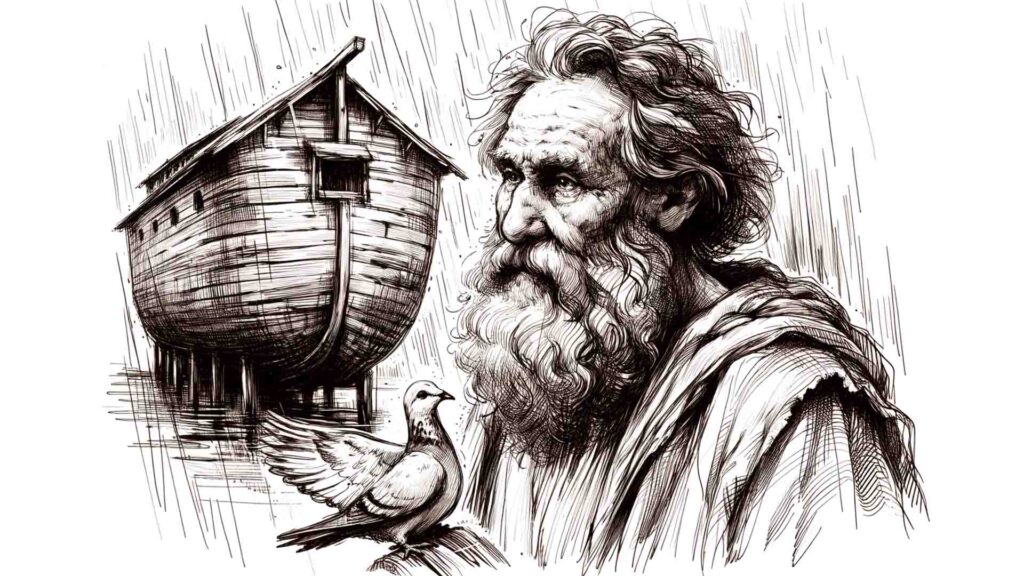
List of those who were onboard the ark, under Noah’s guidance:
- Noah himself: The faithful servant of God who followed God’s instructions and carried out the monumental task of constructing the ark.
- Noah’s wife: Although her name is not mentioned in the biblical account, tradition refers to her as Naamah.
- Noah’s three sons: Shem, Ham, and Japheth, along with their respective wives. The names of their wives are not provided, except for Shem’s wife, who is referenced as “the wife of Shem” (Genesis 7:13).
- Various animals: Noah was instructed to bring two of every kind of unclean animal and seven of every kind of clean animal onto the ark.
- Birds and flying creatures: Noah brought two of every kind of bird and flying creature as well.
- Every creeping thing that creeps on the earth: This includes insects and other smaller creatures that were part of God’s creation.
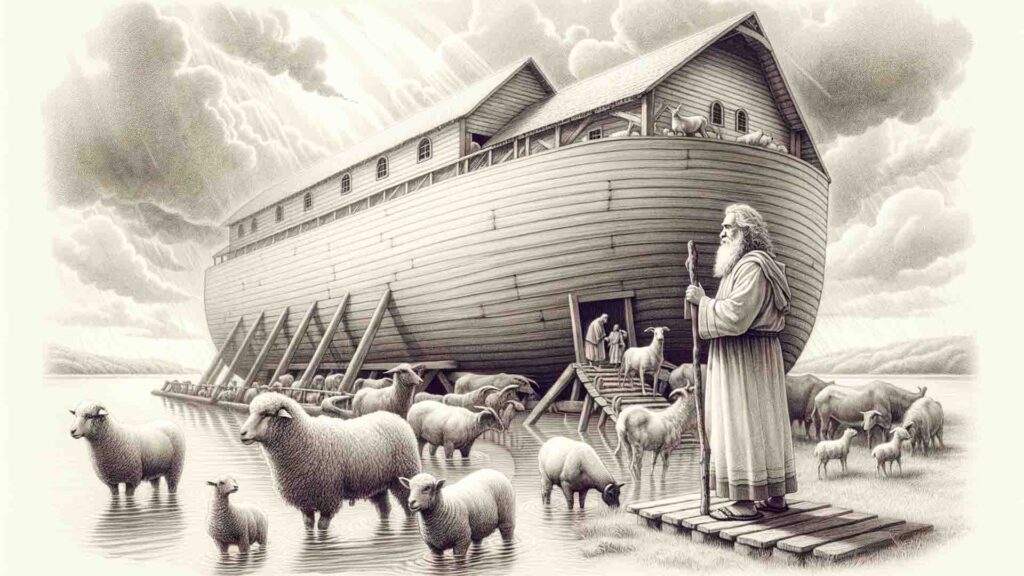
The Number of People on Noah’s Ark is 8:
There were eight individuals on Noah’s ark – Noah himself, his wife, their three sons (Shem, Ham, and Japheth), and their sons’ wives. Noah + wife = 2, 3sons + 3wife = 6, 2+6=8
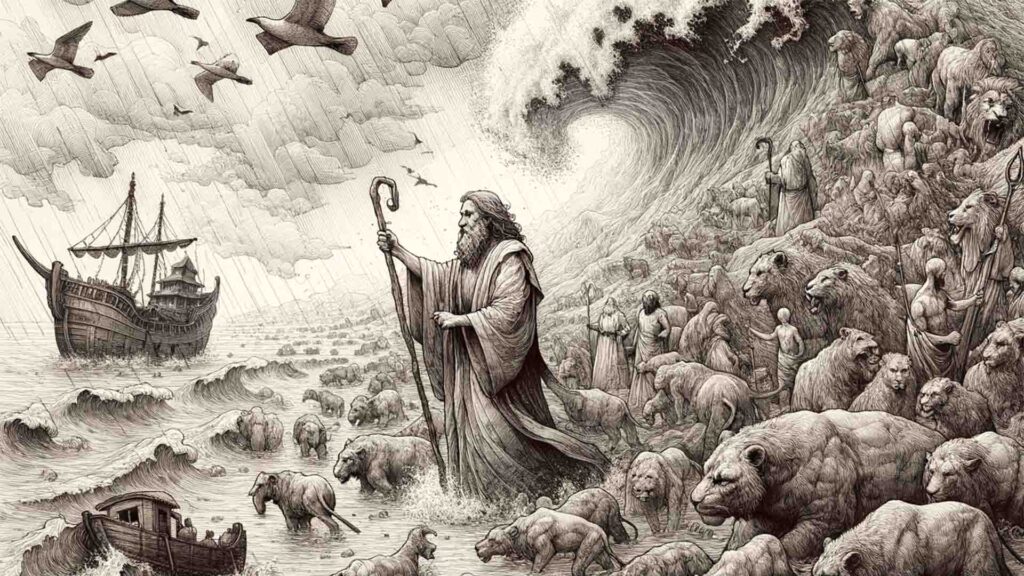
God’s Instruction and Noah’s Obedience
- Genesis 6:14-22 – God instructed Noah to build an ark of gopher wood and gave him specific dimensions and instructions. Despite the monumental task and the mockery he likely faced from his contemporaries, Noah did everything exactly as God commanded.
The Great Flood
- Genesis 7 – Noah, his family, and pairs of every animal species entered the ark, and the floodwaters covered the earth, destroying every living thing that wasn’t on the ark. Noah remained in the ark for about a year until the waters receded.
God’s Covenant with Noah
- Genesis 8-9 – Upon exiting the ark, Noah built an altar to the Lord. God then blessed Noah and his sons, instructing them to be fruitful and multiply. God also established the rainbow as a sign of His covenant that He would never again destroy the earth with floodwaters.
Lessons from Noah’s Life:
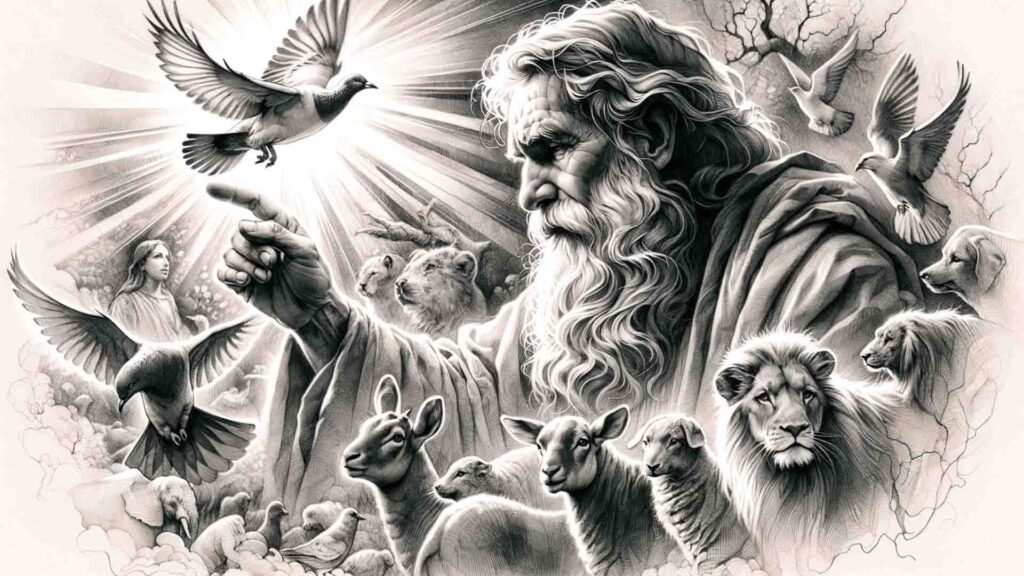
Noah’s story teaches us about faithfulness, obedience, and the significance of living a righteous life. Noah’s unwavering faith in God, even when faced with unparalleled challenges, serves as a powerful example of trust and obedience. Despite any personal shortcomings, Noah’s legacy is defined by his role in God’s plan to save the innocent and restart humanity on a path of righteousness. His life underscores the impact of divine justice and mercy, as well as the enduring promise symbolized by the rainbow.
